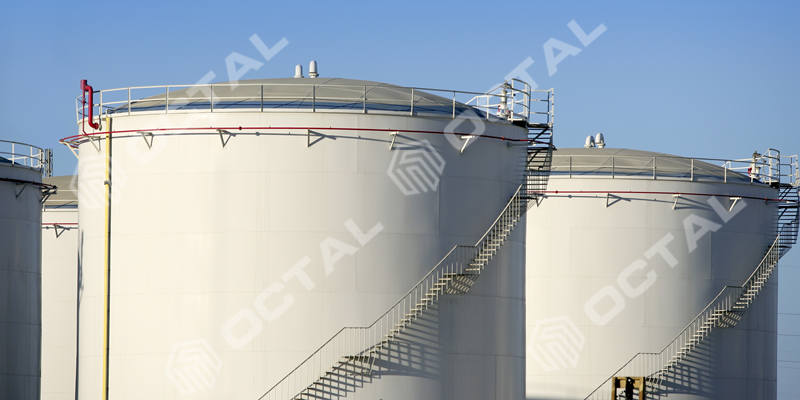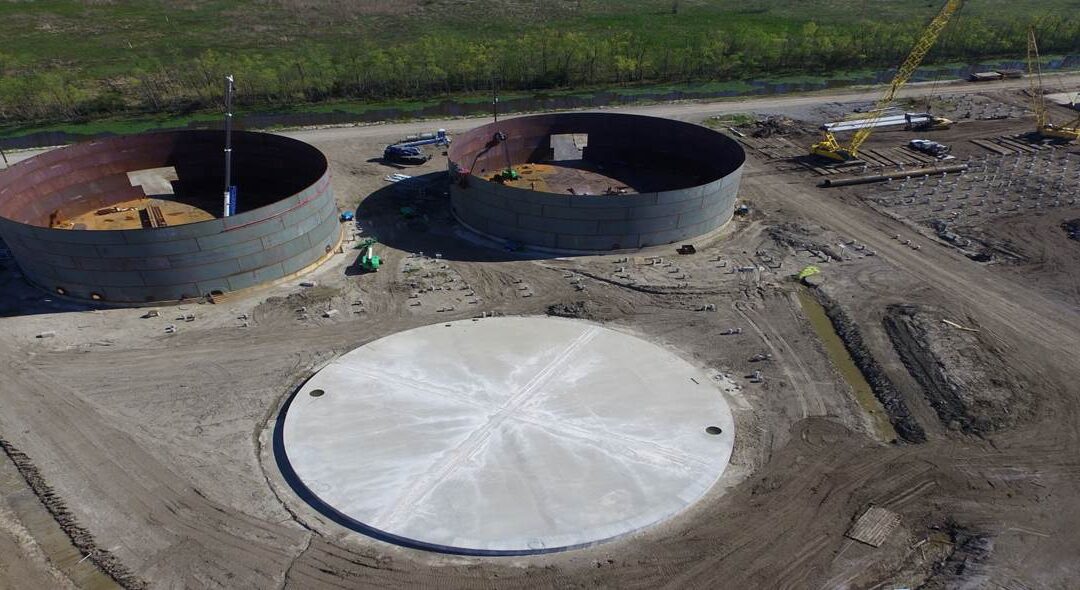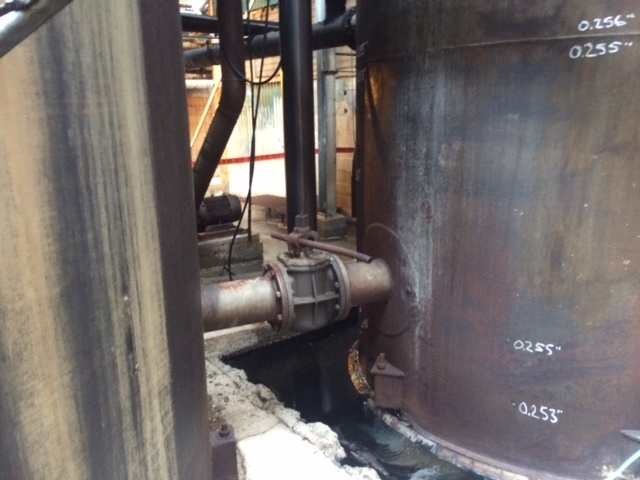Qualified API 650 Welding Inspection Methods for Code Adherence
Wiki Article
Exactly How Welding Inspection Works: A Comprehensive Guide for Professionals
Welding evaluation plays an essential role in making sure the safety and reliability of bonded frameworks. It entails an organized technique that includes both aesthetic evaluation and advanced screening methods. Professionals should acquaint themselves with essential standards and guidelines controling the industry. Understanding the usual problems that can emerge during welding is crucial. This overview will explore these elements thoroughly, supplying insights right into the processes that maintain quality and stability in welding.Understanding the Importance of Welding Examination
While several might ignore the value of welding assessment, it plays an important duty in guaranteeing the honesty and security of welded structures. Effective welding examination determines potential flaws and flaws that can endanger structural toughness and bring about catastrophic failings. The evaluation procedure includes numerous methods, such as aesthetic evaluations, ultrasonic testing, and radiographic analyses, each contributing to the general analysis of weld quality.
In addition to protecting the structural stability, welding inspection guarantees conformity with industry requirements and customer specs. By guaranteeing that welds satisfy called for tolerances and features, inspections aid maintain the dependability and longevity of elements in various applications, from construction to aerospace. An extensive examination process fosters a culture of quality and responsibility amongst makers and welders. Ultimately, welding evaluation is not merely a step-by-step step; it is a crucial technique that underpins the security and performance of engineered systems throughout diverse sectors.
Trick Requirements and Rules in Welding Evaluation
The foundation of effective welding assessment hinges on adherence to established regulations and criteria. Different companies, such as the American Welding Society (AWS) and the American National Requirement Institute (ANSI), set forth guidelines that ensure high quality and security in welding practices. Key requirements, such as AWS D1.1 for structural welding and ASME Area IX for stress vessels, supply detailed requirements for welding treatments, credentials, and examinations. Regulative structures, consisting of those from the Occupational Safety and Health Administration (OSHA), mandate safety methods and worker defenses in welding atmospheres. Conformity with these requirements is essential for attaining consistent weld quality and decreasing the danger of failings. In addition, international requirements like ISO 3834 even more boost international uniformity in welding evaluation techniques. Experts must stay informed about these laws to guarantee that their examination approaches straighten with industry expectations and legal demands, thus safeguarding both employees and architectural stability.Preliminary Preparation and Aesthetic Examination Techniques

Effective welding evaluation begins with a comprehensive pre-inspection checklist that assures all required problems are met before the actual assessment takes location. Following this preparation, visual defect identification plays a necessary role in reviewing weld top quality, permitting assessors to detect problems such as fractures or improper blend. Together, these strategies develop the foundation for a successful welding examination process.
Pre-Inspection List
Prior to beginning any type of welding inspection, a thorough pre-inspection list is necessary to guarantee that all required prep work are finished which visual evaluation techniques are properly used. Crucial element of this checklist consist of confirming the welding treatment spec (WPS), ensuring all devices is calibrated and in excellent functioning condition, and confirming that the inspector possesses the required accreditations. Additionally, it is crucial to assess any type of previous inspection records and to analyze the job atmosphere for safety hazards. The inspector must likewise validate that all relevant paperwork, such as product certifications and assessment records, is readily offered. Finishing this list helps to establish a strong structure for an effective assessment process, improving the reliability of the results gotten.Aesthetic Flaw Identification
An effective aesthetic issue identification procedure begins with cautious first prep work and the application of established aesthetic evaluation strategies. Assessors ought to guarantee that the welding location is well-lit and clean, as sufficient presence is essential for finding issues. A detailed assessment of the weld joint's surface area enables the identification of interruptions, such as cracks, undercuts, or porosity. Examiners commonly utilize devices like magnifying glasses or mirrors to improve their sight of hard-to-reach areas. Additionally, they need to be familiar with the certain welding criteria and guidelines relevant to the task. By sticking to these approaches, assessors can effectively recognize potential concerns, protecting the honesty of the weld and compliance with market requirements.Non-Destructive Testing Techniques: A Summary
Non-destructive testing (NDT) approaches play a crucial role in the welding inspection procedure by making sure the integrity and integrity of bonded structures without causing any damage (API 650 Welding Inspection). These techniques enable inspectors to examine the top quality of welds while protecting the components being analyzed. Usual NDT methods consist of ultrasonic testing, radiographic testing, magnetic bit screening, and color penetrant testing, each offering special advantagesUltrasonic testing uses high-frequency acoustic waves to spot inner flaws, while radiographic testing uses X-rays or gamma rays to imagine the internal framework of welds. Magnetic particle testing reveals surface area and near-surface issues by using a magnetic area and iron fragments to the weld area. Color penetrant testing highlights surface-breaking imperfections with the application of a colored color. Together, these NDT techniques give crucial insights into weld top quality, allowing specialists to make educated choices pertaining to safety and conformity in welding applications.
Typical Flaws and Their Effects
Determining typical problems in welded joints is necessary for keeping structural stability and security. Various issues can develop during the welding procedure, each carrying potential effects for the overall efficiency of the structure. Porosity, characterized by tiny gas pockets within the weld, can compromise the joint and jeopardize its load-bearing capacity. Fractures might establish due to thermal stress and anxiety or inappropriate air Web Site conditioning, resulting in prospective failing under tension. Incomplete fusion happens when the weld steel does not completely bond with the base material, causing weak joints that might not withstand desired loads. Undercutting, where the base metal is eroded, can additionally lower the reliable cross-section of the weld. Additionally, extreme support Check This Out can produce stress focus that could bring about failure. Identifying these defects quickly permits restorative procedures, guaranteeing the durability and dependability of bonded frameworks in vital applications.Devices and Devices Made Use Of in Welding Examination
Reliable welding examination depends on a selection of specialized devices and tools to ensure the high quality and integrity of bonded joints. Essential tools consist of aesthetic examination tools, such as multiplying borescopes and glasses, which enable inspectors to closely analyze welds for surface area problems. Non-destructive testing (NDT) methods, such as ultrasonic screening, radiographic testing, and magnetic bit testing, are basic for determining interior defects without harming the material.Measurement devices, consisting of calipers and weld determines, help examine measurements and identify compliance with requirements. Furthermore, firmness testers review the mechanical homes of welded joints. Individual protective devices (PPE) is likewise imperative, protecting the security of assessors while functioning in possibly harmful settings (API 650 Welding Inspection). Each device offers a details function, collectively improving the effectiveness of welding evaluation and adding to the dependability of finished projects
Regularly Asked Inquiries
What Certifications Are Needed to End Up Being a Welding Inspector?
To become a welding assessor, people generally require appropriate accreditations, such as AWS CWI or CSWIP, along with experience in welding procedures, design concepts, and knowledge of inspection methods, safety requirements, and applicable codes.Just How Commonly Should Welding Inspections Be Performed?
Welding assessments ought to be conducted routinely, ideally at different project stages, consisting of pre-weld, during-weld, and post-weld. Frequency might also depend upon sector requirements, project specs, and the intricacy of the welds involved.Can Welding Defects Be Fixed After Inspection?

Yes, welding problems can frequently be fixed after assessment. Depending upon the extent and kind of issue, appropriate methods such as reworking or additional welding might be employed to recover architectural honesty and safety and review security compliance.
What Industries Require Regular Welding Evaluations?

Different markets, including construction, manufacturing, aerospace, and automotive, call for normal welding inspections - API 650 Welding Inspection. These assessments assure adherence to security criteria and high quality control, lessening dangers connected with architectural stability and functional efficiency in welded components
Just how Do I Select a Welding Inspection Service?
To choose a welding evaluation service, one need to take into consideration credentials, experience, certifications, and sector reputation. In addition, examining client reviews and assuring the service satisfies pertinent criteria can assist assure top quality inspections and trusted results.
While numerous might underestimate the value of welding inspection, it plays a necessary function in guaranteeing the integrity and security of bonded structures. Key standards, such as AWS D1.1 for architectural welding and ASME Section IX for pressure vessels, supply extensive criteria for welding credentials, examinations, and treatments. Reliable welding evaluation begins with an extensive pre-inspection checklist that assures all required problems are fulfilled before the real inspection takes area. Prior to starting any welding assessment, an extensive pre-inspection list is essential to guarantee that all required preparations are finished and that visual examination strategies are properly employed. Non-destructive screening (NDT) techniques play a necessary function in the welding evaluation procedure by making certain the honesty and dependability of welded frameworks without triggering any damages.
Report this wiki page